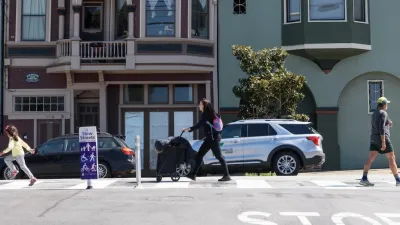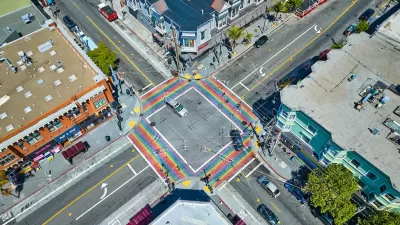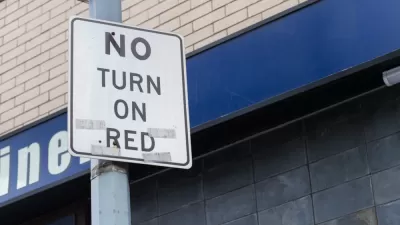The policy is common in many countries, New York City, and other dense urban areas with high numbers of pedestrians and cyclists.

According to an article in Streetsblog San Francisco by Roger Rudick, the San Francisco Board of Supervisors unanimously passed a resolution that moves to ban right turns on red in the city. “According to the MTA, turn-on-red crashes account for 20% of pedestrian- or bicycle-related injury crashes involving drivers turning at signal-based intersections.”
Supervisor Preston, author of the bill, said “This is another important step toward reducing traffic collisions and making our streets safer for pedestrians and cyclists.”
Right turns on red are shown to pose more danger to pedestrians and cyclists, leading to more car-pedestrian (or bike) collisions. According to advocate Luke Bornheimer, “The resolution simply calls for SFMTA to prepare a plan for a citywide policy, and SFMTA’s own evaluation showed that 92% of drivers complied with NTOR, close calls decreased by 80%, and drivers blocking crosswalks decreased 72% after SFMTA implemented NTOR at 50 intersections in the Tenderloin in 2021.”
Bornheimer adds, “No Turn On Red increases safety, access, and comfort for people, and drivers overwhelmingly comply even with traffic enforcement at historic lows,” calling it an “easy win” for street safety.
Right turns on red are banned in many countries with successful Vision Zero policies, as well as New York City.
FULL STORY: Supes Pass No Right on Red

Study: Maui’s Plan to Convert Vacation Rentals to Long-Term Housing Could Cause Nearly $1 Billion Economic Loss
The plan would reduce visitor accommodation by 25,% resulting in 1,900 jobs lost.

North Texas Transit Leaders Tout Benefits of TOD for Growing Region
At a summit focused on transit-oriented development, policymakers discussed how North Texas’ expanded light rail system can serve as a tool for economic growth.

Why Should We Subsidize Public Transportation?
Many public transit agencies face financial stress due to rising costs, declining fare revenue, and declining subsidies. Transit advocates must provide a strong business case for increasing public transit funding.

How to Make US Trains Faster
Changes to boarding platforms and a switch to electric trains could improve U.S. passenger rail service without the added cost of high-speed rail.

Columbia’s Revitalized ‘Loop’ Is a Hub for Local Entrepreneurs
A focus on small businesses is helping a commercial corridor in Columbia, Missouri thrive.

Invasive Insect Threatens Minnesota’s Ash Forests
The Emerald Ash Borer is a rapidly spreading invasive pest threatening Minnesota’s ash trees, and homeowners are encouraged to plant diverse replacement species, avoid moving ash firewood, and monitor for signs of infestation.
Urban Design for Planners 1: Software Tools
This six-course series explores essential urban design concepts using open source software and equips planners with the tools they need to participate fully in the urban design process.
Planning for Universal Design
Learn the tools for implementing Universal Design in planning regulations.
City of Santa Clarita
Ascent Environmental
Institute for Housing and Urban Development Studies (IHS)
City of Grandview
Harvard GSD Executive Education
Toledo-Lucas County Plan Commissions
Salt Lake City
NYU Wagner Graduate School of Public Service





























